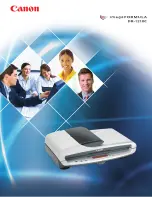
10
Maintenance
10.1
Safety
DANGER
Improper work on the product
A modified product may not offer the expected protection if it is integrated incorrectly.
b
Apart from the procedures described in this document, do not repair, open, manip‐
ulate or otherwise modify the product.
10.2
Regular cleaning
Overview
Depending on the ambient conditions, the optics cover must be cleaned regularly and
in the event of contamination. For example, static charges can cause dust particles to
be attracted to the optics cover.
Important information
DANGER
Hazard due to lack of effectiveness of the protective device
Persons and parts of the body to be protected may not be recognized in case of
non-observance.
b
Regularly check the degree of contamination on all components based on the
application conditions.
DANGER
Hazard due to lack of effectiveness of the protective device
Persons and parts of the body to be protected may not be recognized in case of
non-observance.
b
Make sure that the optical properties of the optics cover are not changed by:
°
beading water, mist, frost, or ice formation. If necessary, remove any residues
of this type or any other form of contamination and restart the safety laser
scanner.
°
Damage. Replace damaged optics covers.
°
Substances containing oil or fat. Substances like this may impair the detec‐
tion capability of the safety laser scanner. Therefore keep the optics cover
free from substances containing oil or fat.
DANGER
Hazard due to unexpected starting of the machine
b
Make sure that the dangerous state of the machine is and remains switched off
during cleaning.
b
Make sure that the safety laser scanner’s outputs do not affect the machine
during cleaning.
NOTICE
b
Do not use aggressive or abrasive cleaning agents.
b
Recommendation: Use anti-static cleaning agents.
b
Recommendation: Use anti-static plastic cleaners and lens cloths from SICK.
MAINTENANCE
10
8017784/1ELL/2022-01-21 | SICK
O P E R A T I N G I N S T R U C T I O N S | microScan3 Core I/O AIDA
109
Subject to change without notice
















































